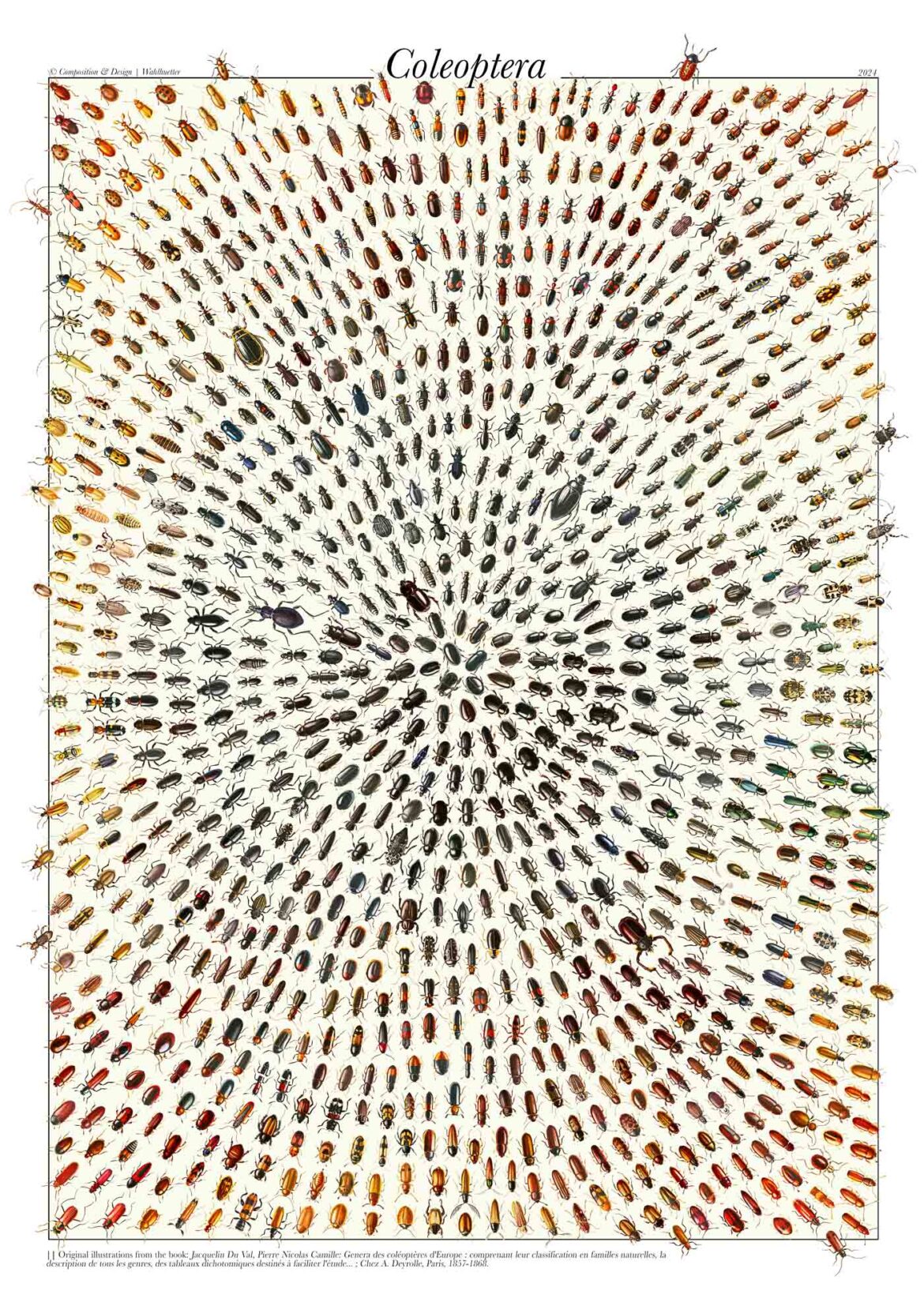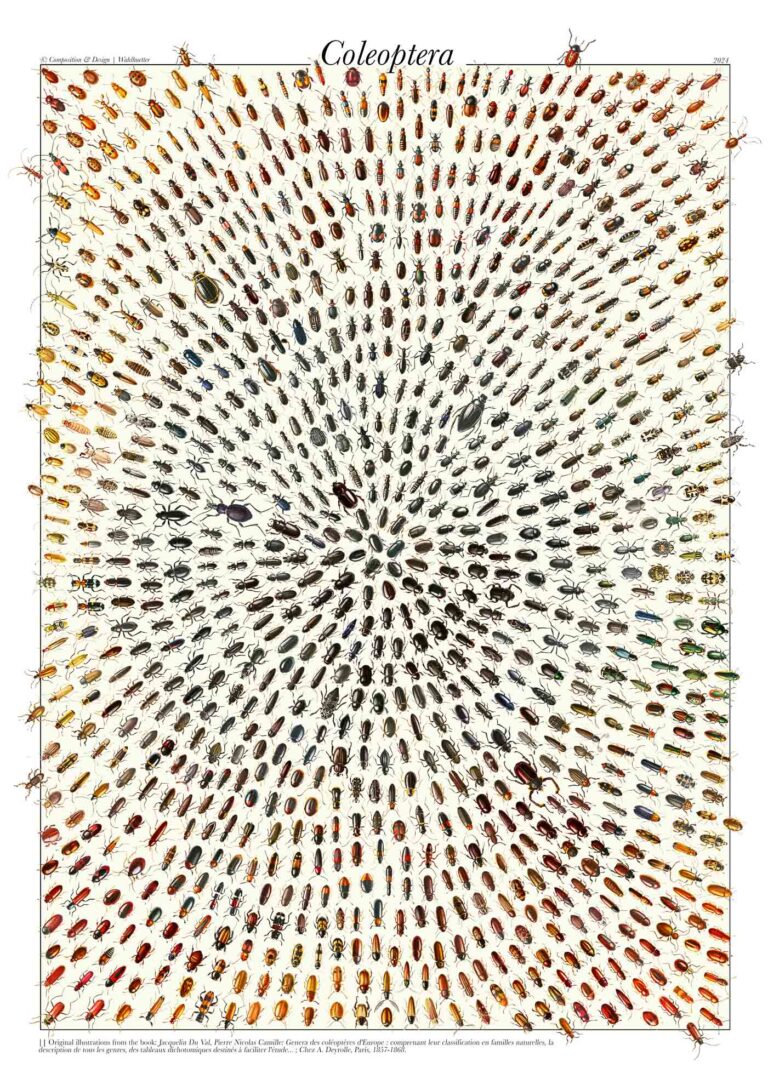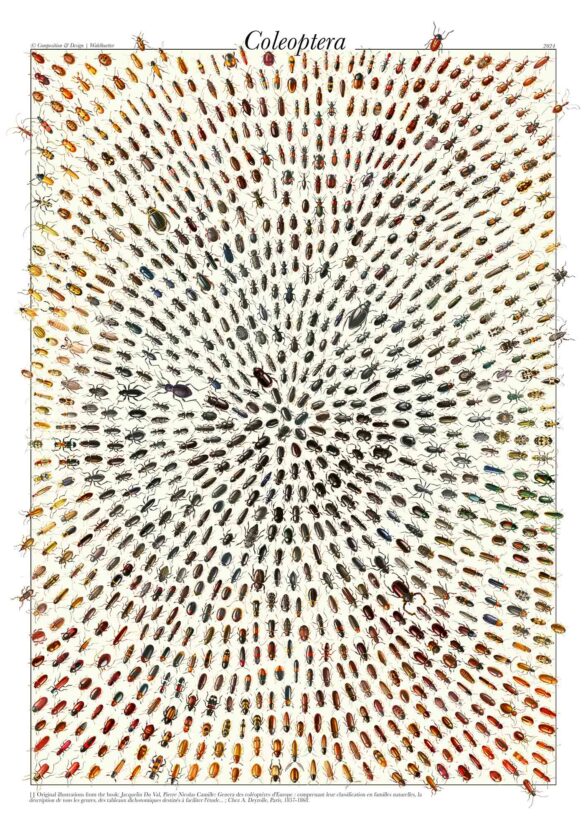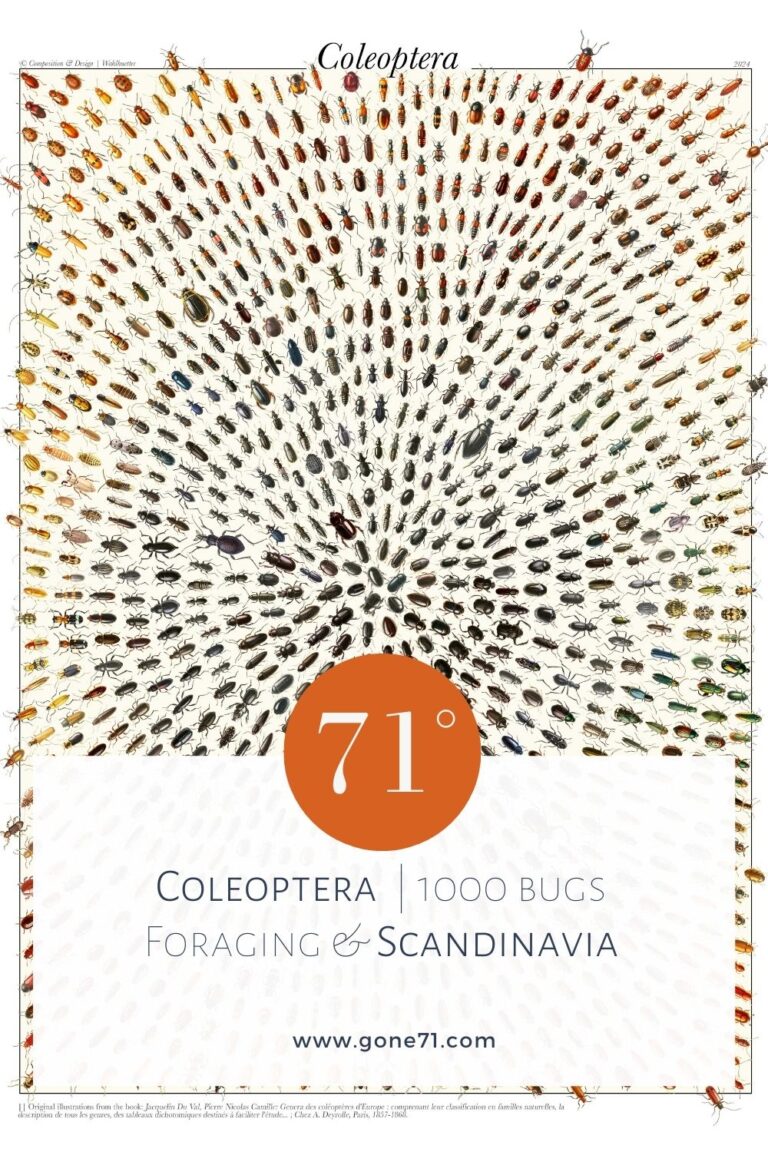In the realm of entomology, few insects captivate the imagination like beetles. Their sheer diversity and intricate designs have fascinated scientists and nature enthusiasts for centuries. Now, imagine a digital poster that brings together over 1000 different species of European beetles, showcasing their remarkable features in stunning detail.
This groundbreaking digital poster is more than just a collection of insect illustrations; it’s a comprehensive exploration of Coleoptera biodiversity. Each beetle species is meticulously depicted, from the iconic Ladybird Beetles (Coccinellidae) to the striking Longhorn Beetles (Cerambycidae) and the elusive Ground Beetles (Carabidae).
The original file was created in very High Resolution (DIN A0 @ 300ppi) with a resolution of 7016 x 9933 pixels and can therefore also be printed in very large dimensions (over 1 meter).


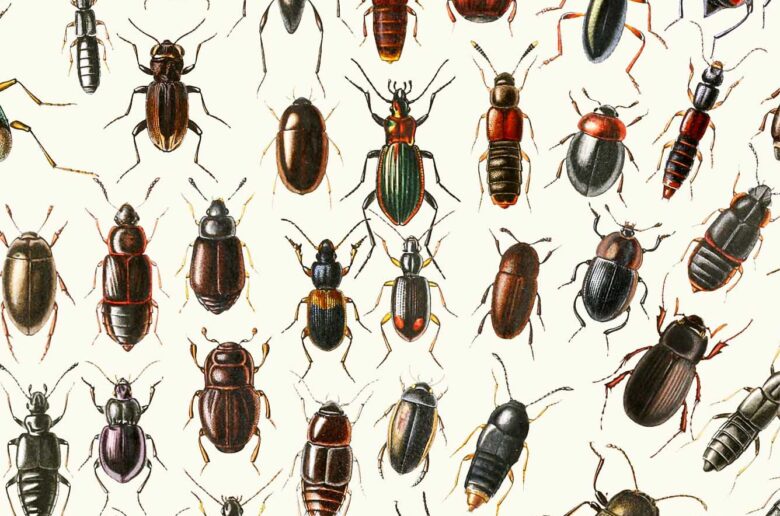
The Coleoptera poster – a showcase of forms and colours
What makes this poster truly remarkable is its ability to showcase the vast array of beetle forms, colors, and adaptations. From the iridescent sheen of jewel beetles to the intricate patterns of weevils, every illustration highlights the unique characteristics that make beetles one of the most diverse groups of organisms on Earth.
For entomologists and nature lovers alike, this digital poster serves as a valuable educational tool and a visual feast. It not only celebrates the beauty of beetles but also underscores their ecological importance as pollinators, decomposers, and indicators of environmental health.
Whether displayed in a classroom, laboratory, or personal space, this digital masterpiece invites viewers to embark on a journey through the fascinating world of European beetles. It’s a testament to the wonders of nature and a reminder of the incredible biodiversity that surrounds us.
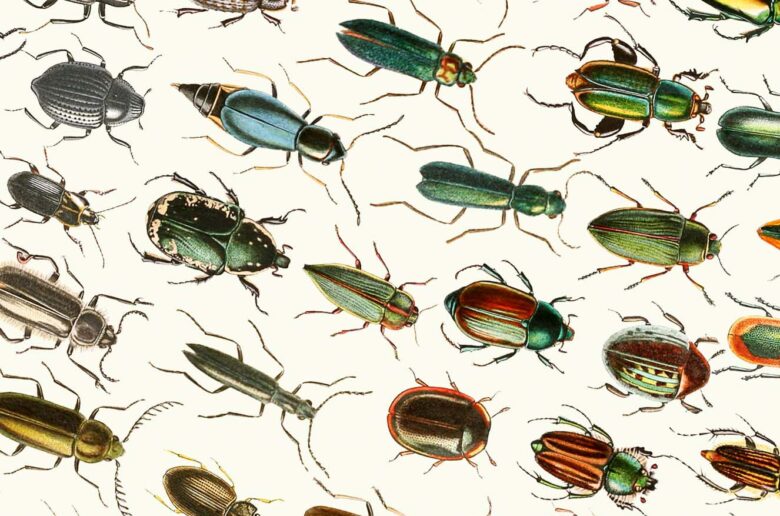
About Coleoptera in Europe
Coleoptera, comprising the order of beetles, represents one of the most diverse and abundant groups of insects in Europe, with over 25,000 species identified to date. These insects exhibit remarkable ecological adaptability, occupying diverse habitats ranging from forests and grasslands to wetlands and urban environments. The taxonomic richness of European Coleoptera encompasses numerous families and subfamilies, each characterized by unique morphological features and life histories. From the iconic ground beetles (Carabidae) known for their predatory prowess to the diverse weevils (Curculionidae) that specialize in herbivory, Coleoptera play crucial roles in ecosystem functioning, including decomposition, pollination, and pest regulation. Their evolutionary success is underscored by intricate behavioral adaptations, such as chemical defense mechanisms and complex reproductive strategies. Despite their ubiquity, many beetle species in Europe face conservation challenges due to habitat loss, climate change, and anthropogenic disturbances, highlighting the need for continued research and conservation efforts to safeguard their invaluable ecological contributions and biodiversity.
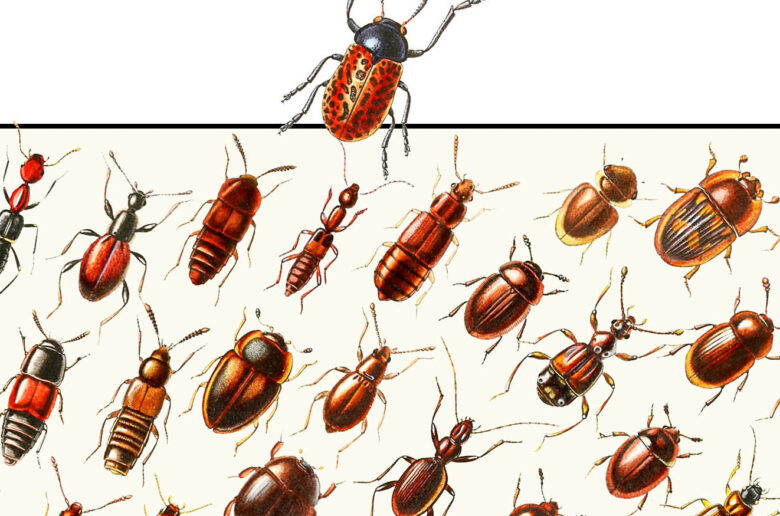
“Digital foraging”
Introducing “digital foraging”, my latest project that delves into the vast and untapped world of digital information. With a sheer endless amount of historic images and resources available online, the possibilities are endless. The artwork you see here is a perfect example of what can be achieved through “digital foraging”.
Unfortunately it takes much more than just a quick search to get the results you see here. It takes hours of research, technical know-how and a keen eye to find the right images, in the right resolution, and format. And that’s just the beginning. The real work starts with processing and manipulating the images to create something new and unique.
For me, this is what “digital foraging” is all about. The thrill of the hunt, the excitement of discovery and the satisfaction of creating something new and beautiful from what was once forgotten. It’s also a modern take on the traditional art of foraging, and I can’t wait to see what else can be found in the vast depths of the digital world.
The work behind the scenes
Creating a comprehensive poster featuring over 1000 species of European beetles is a monumental task that demands meticulous attention to detail and extensive labor. Beyond the research and restoration of historic illustrations, each individual beetle must be carefully isolated, adjusted for size and orientation, and strategically placed within the composition. This process of image editing and layout design is incredibly time-consuming, often requiring days and even weeks of dedicated work to ensure the poster achieves both visual coherence and scientific accuracy. Every aspect of the poster, from the selection of beetle species to the final arrangement of illustrations, represents a labor of passion and commitment to showcasing the rich diversity of Coleoptera in a compelling and educational format.
We spent countless hours to research this composition and to carefully restaurate the lithographic images. We hope that you find joy in it if you decide to purchase a copy. You can print it out as is and display it in your living room, kitchen, office or wherever you find it fitting. There are countless options for usage and you can of course always print it in smaller sizes too.
The original images
The original drawings are often true works of art that deserve their own place on the wall. Meticulously drawn and presented, you can find a large number of such pictures on the Internet. What photos do today was solved back then with meticulously prepared illustrations.
Let us know what you think of these images and feel free to give us suggestions on which topics we should delve into next.
About Lithography
Lithography is a printing process that uses a flat stone or metal plate on which the image areas are worked using a greasy substance so as to repel the ink, while the non-image areas accept it. The process was invented in 1796 by German author and actor Alois Senefelder as a cheap method of publishing theatrical works.
Lithography has been used extensively in the production of scientific illustrations and is particularly well suited for reproducing fine details and subtle variations in tone. The process allows for a high degree of precision and accuracy, making it ideal for reproducing scientific drawings and illustrations.
When it comes to scientific prints, lithography has been used to reproduce illustrations and drawings of plants, animals, and various other organisms. The illustrations are often highly detailed, with great attention paid to capturing the fine details of the subject. In addition to reproducing illustrations, lithography has also been used to create maps, architectural plans and technical drawings.
Lithographic prints are valued for their high quality and accuracy and are often considered works of art in their own right. They are also often used as educational tools to help students learn about different species and their characteristics.
Find some inspiration here
↓↓↓

